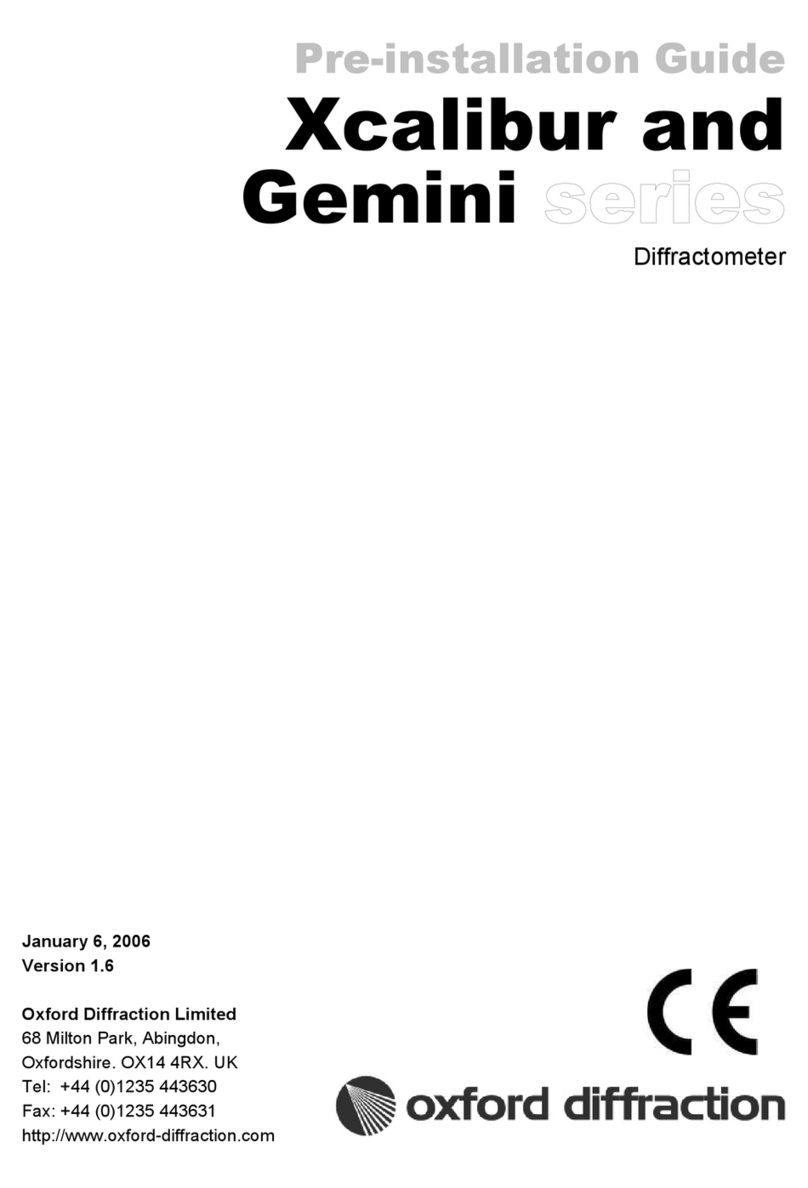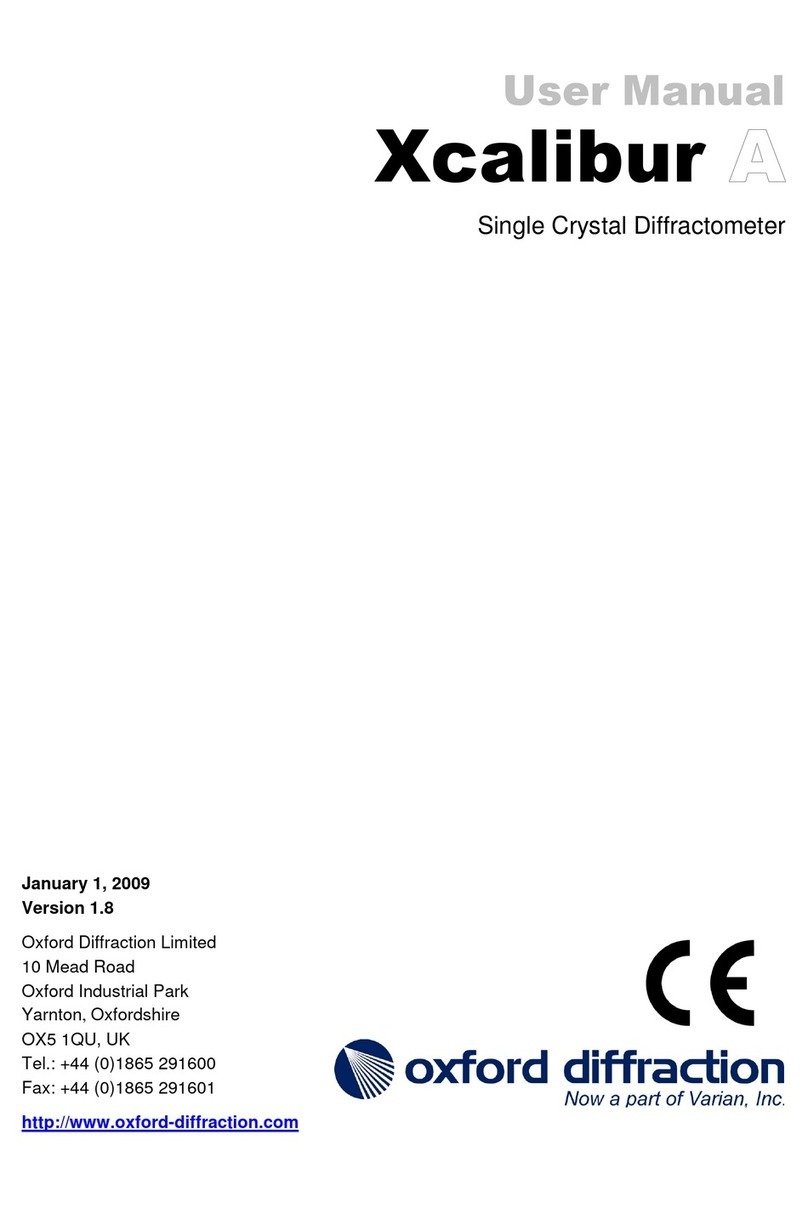
Version 1.5 Xcalibur_Manual_v1.5 Xcalibur
Page iv USER MANUAL
4.2.8 Radiation Damage ....................................................................................................... 19
4.2.9 Full Well Depth and 18-bit Digitisation ......................................................................... 19
4.2.10 Anti-blooming ............................................................................................................. 19
4.2.11 Vacuum ...................................................................................................................... 20
4.2.12 Fast Shutter................................................................................................................ 20
4.2.13 Zingers and Cosmic Ray Events................................................................................ 20
4.3 Four-Circle Kappa Geometry Goniometer ............................................................................ 20
4.4 X-ray Generator..................................................................................................................... 21
4.5 Software ................................................................................................................................ 22
4.5.1 Directory Structure .......................................................................................................22
4.5.2 Basic Menu Philosophy................................................................................................ 23
4.6 KMW200CCD Chiller............................................................................................................. 23
4.7 KMW3000C Chiller................................................................................................................ 23
4.8 Low Temperature Option....................................................................................................... 23
4.9 Safety Features ..................................................................................................................... 23
5. Handling, Installation, Storage and Transit Information ............24
5.1 Reception and Handling........................................................................................................ 24
5.1.1 Delivery ........................................................................................................................ 24
5.1.2 Unpacking .................................................................................................................... 24
5.1.3 Mechanical Handling.................................................................................................... 25
5.1.3.1 Weights, Dimensions and Lifting Points .......................................................... 25
5.1.3.2 Boxed Weights, Dimensions and Lifting Points on
Delivery ...................................................................................................................... 26
5.2 Installation and Setting to Work ............................................................................................27
5.2.1 Preparation of Site and Services ................................................................................. 27
5.2.1.1 Environmental Requirements .......................................................................... 27
5.2.1.2 System Layout ................................................................................................. 27
5.2.1.3 Electrical Services............................................................................................ 27
5.2.1.4 Water Supply ................................................................................................... 29
5.2.1.5 Low Temperature Option ................................................................................. 29
5.2.1.6 CCD Camera Pumping .................................................................................... 29
5.2.1.7 Helijet Option ................................................................................................... 29
5.2.2 Setting to Work............................................................................................................. 30
5.2.2.1 Equipment Required ........................................................................................ 30
5.2.2.2 Personnel Required for Installation.................................................................. 30
5.2.2.3 Setting up Procedures ..................................................................................... 30
5.3 Storage ........................................................................................................................ 32
6. Operation........................................................................................33
6.1 Controls and Indicators ......................................................................................................... 33
6.2 Initial Switch on Procedure.................................................................................................... 34
6.3 X-ray Tube Warm-up Procedure........................................................................................... 36
6.4 Software ................................................................................................................................ 37
6.4.1 Software Updates......................................................................................................... 37
6.4.2 Software Installation.....................................................................................................38
6.4.2.1 MGC interface software ................................................................................... 38
6.4.2.2 CrysAlis Software............................................................................................. 39
6.4.3 Changing Machine Correction and Set-up Files .......................................................... 39
6.5 Normal Operation.................................................................................................................. 40
6.5.1 General Commands..................................................................................................... 40






























